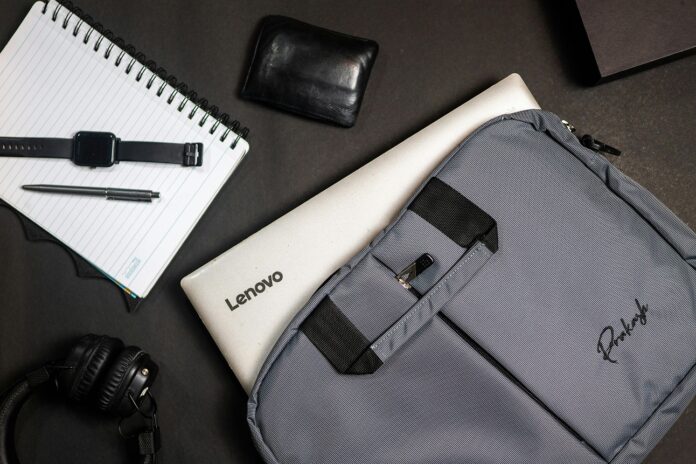If your Lenovo laptop’s Touchpad has suddenly stopped working, you’re not alone. Thousands of Lenovo users across popular models, including the IdeaPad, ThinkPad, Yoga, and Legion series, have reported the same issue. A non-responsive Lenovo touchpad can be frustrating, especially if you’re travelling, working remotely, or simply don’t have a mouse handy.
The good news? In most cases, the fix is quick and doesn’t require professional repair. Often, it’s a matter of a disabled setting, a minor Windows glitch, or a driver issue. Below, we’ll walk through the most common solutions, starting with the simplest. Follow these steps in order, and you can usually have your Touchpad working again in just a few minutes.
1. Check Touchpad Settings in Windows
Believe it or not, the most common reason a Lenovo touchpad stops working is that it has been disabled in Windows, sometimes accidentally and sometimes after an update.
Here’s how to check:
-
Press Windows key + I to open the Settings menu.
-
Navigate to Devices > Touchpad. (You can also just search for Touchpad in System Settings.)
-
Ensure the toggle for Touchpad is switched on.
This quick fix has resolved the problem for countless IdeaPad and Yoga owners without any further troubleshooting.
2. Use the Touchpad Toggle Shortcut
Many Lenovo laptops have a keyboard shortcut that enables or disables the Touchpad. If you accidentally hit it, the Touchpad will stop responding.
-
Look for a touchpad icon on your function keys (commonly F6, F7, F8, or F10).
-
Hold the Fn key and press the corresponding key once or twice.
On Legion and ThinkPad laptops, this shortcut is one of the most frequently overlooked fixes.
3. Use Device Manager to Reinstall the drivers of the Lenovo Touchpad
Corrupted or outdated drivers are another common culprit. If the Touchpad driver is not working properly, it’s best to reinstall it.
-
Press Windows key + X and select Device Manager.
-
Expand Human Interface Devices.
-
Locate entries such as “HID-compliant touchpad” or “I2C HID Device.”
-
Right-click and choose Uninstall device.
-
If it’s missing or unresponsive, try View > Show hidden devices.
- Now, right-click on the root entry of Device Manager, which is typically DESKTOP-XXX, and click “Scan for hardware changes.”
- Restart your laptop. Windows will reinstall the default driver.
For many Yoga and ThinkPad users, it may be disabled; enabling it will resolve the issue immediately.
4. Disable Power Saving for the Touchpad
Sometimes, Windows automatically turns off certain devices to save power, which can unexpectedly disable your Touchpad.
-
In Device Manager, right-click the entry for your Touchpad (typically labeled “I2C HID Device”).
-
Go to Properties > Power Management.
-
Uncheck Allow the computer to turn off this device to save power.
Legion owners, in particular, have reported that this step permanently fixed intermittent touchpad issues.
5. Check Lenovo Vantage or Lenovo Toolkit
Some Lenovo-specific apps, like Lenovo Vantage or Lenovo Toolkit, can override Windows settings and disable the Touchpad without warning.
-
Open the app (you can search “Vantage” in the Start Menu).
-
Check if the Touchpad is disabled within the app’s hardware settings.
-
Re-enable it, save your settings, and reboot.
Several Legion users found their Touchpad came back to life after discovering it had been switched off in Lenovo’s tools.
6. Update Windows and Lenovo Drivers
Sometimes the problem stems from a bug introduced by an update or one that is fixed by a subsequent update.
-
Go to Settings > Windows Update and install any pending updates.
-
Open Lenovo Vantage to check for System Updates, including driver and firmware patches.
Many IdeaPad and Yoga owners reported that updating both Windows and Lenovo drivers finally resolved persistent issues.
What If None of These Fixes Your Lenovo’s Touchpad?
If you’ve tried all the steps above and your Touchpad is still unresponsive, it could indicate a hardware failure, especially if the device isn’t showing up in Device Manager at all.
At this point, you have a few options:
-
Use a physical USB or Bluetooth mouse as a temporary solution.
-
Check your warranty status (Lenovo laptops typically come with a one-year warranty by default).
-
Contact Lenovo Support or visit an authorised service centre for diagnostics. The fix may involve replacing the Touchpad or performing a motherboard-level repair.
The Bottom Line
For most Lenovo laptops, whether you own an IdeaPad, ThinkPad, Yoga, or Legion, the touchpad issue typically stems from software, settings, or a driver glitch. Walking through these steps methodically will solve the problem for the vast majority of users.
If your Touchpad still doesn’t work, don’t panic. Use an external mouse for now, contact Lenovo support, and explore repair options if you’re still within the warranty period.
A malfunctioning touchpad is inconvenient, but in most cases, it’s not the end of your laptop; it’s just a reminder that sometimes a quick settings check can save you hours of frustration.


















